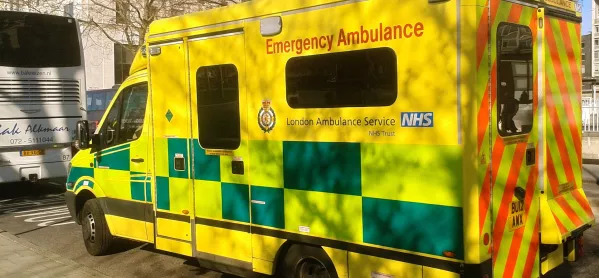- Home
- Opening schools risks double strength second Covid wave
Opening schools risks double strength second Covid wave

Without a dramatic increase in testing and tracing, the reopening of schools together with gradual relaxing of lockdown measures and an increase in the number of people returning to work is likely to cause a second Covid-19 wave, researchers have found.
The second wave would peak in December 2020 if schools open full-time in September, or in February 2021 if a part-time rota is implemented.
In both cases, the model used in the study shows an R-value rising above 1 and creating a second wave of infections 2-2.3 times the size of the original Covid-19 wave in the UK.
Coronavirus: Teacher workload ‘unsustainable’ during lockdown
Research: Give teachers PPE to keep schools open
Testing: Schools need rapid Covid tests to avoid flu confusion
News: Schools could use 90-minute Covid test, says minister
However, a second wave could be avoided by testing 75 per cent of those with Covid-19 symptoms and tracing at least 68 per cent of their contacts, together with isolating those who have been diagnosed.
A robust testing strategy could prevent further school closures stemming from local lockdowns, Dr Jasmina Panovska-Griffiths, the lead author, suggested.
Dr Panovska-Griffiths said: “Our findings suggest that reopening schools can form part of the next step of gradual relaxing of lockdown if combined with a high-coverage TTI [test, trace, isolating] strategy.
“If the strategy is effective enough, this would be a sufficient alternative to intermittent lockdown measures including further school closures while we await an effective vaccine against SARS-CoV-2.”
The study, which used a model simulating various scenarios, examined the possible implications of schools reopening in the UK coupled with broader reopening of society, such as more parents returning to the workplace and increased socialising within the community.
Co-led by UCL and the London School of Hygiene & Tropical Medicine, the study estimates that if schools return full-time in September, and assuming 68 per cent of contacts can be traced, that 75 per cent of those with symptoms would need to be diagnosed and isolated.
Under a more pessimistic scenario, if only 40 per cent of contacts can be traced, the testing figure would have to rise to 87 per cent.
Professor Chris Bonell, one of the authors of the study, said the current testing system has “about 50 per cent coverage”.
“Our findings suggest that it might be possible [to avoid] a secondary epidemic wave in the UK, if enough people with symptomatic infection can be diagnosed and their contacts traced and effectively isolated,” he said.
“This is a scenario with a model, not a prediction of what is going to happen. It all depends on the other measures and the level of TTI coverage.
“Currently, TTI is not achieving the levels that we modelled. Looking at the NHS reports from the TTI system, it looks like it’s about 50 per cent coverage.”
Importance of effective tracing
The model assumes that around 70 per cent of people would return to workplaces once their children returned to school and up to a 90 per cent increase of mixing within the community with schools reopening.
The importance of effective contact tracing strategies is also highlighted in another study published in the same journal, The Lancet Child & Adolescent Health.
The study looked at data tracking Covid-19 spread within 25 school and nurseries in New South Wales, Australia from January to April 2020.
It found that although 15 teachers and 12 children went to school or nursery while infectious, only an additional 18 people later became infected - out of 1,448 contacts.
The findings suggest that schools and nursery centres do not pose a high risk for onward transmission of coronavirus where effective contact testing strategies are in place.
Australia, which had comparatively low Covid-19 incidence during the first wave of the epidemic, kept schools open during the first wave, with guidance in place for physical distancing and hygiene.
The authors caution that there are some limitations to the study, for example, that the majority of close contacts were tested after developing symptoms, suggesting that some asymptomatic or milder cases may have been missed.
Children were also encouraged to stay home for distance learning from 22 March and although schools did remain open, there was a drop in school attendance from 90 per cent to approximately 5 per cent immediately before the school holidays in April.
Keep reading for just £1 per month
You've reached your limit of free articles this month. Subscribe for £1 per month for three months and get:
- Unlimited access to all Tes magazine content
- Exclusive subscriber-only stories
- Award-winning email newsletters



